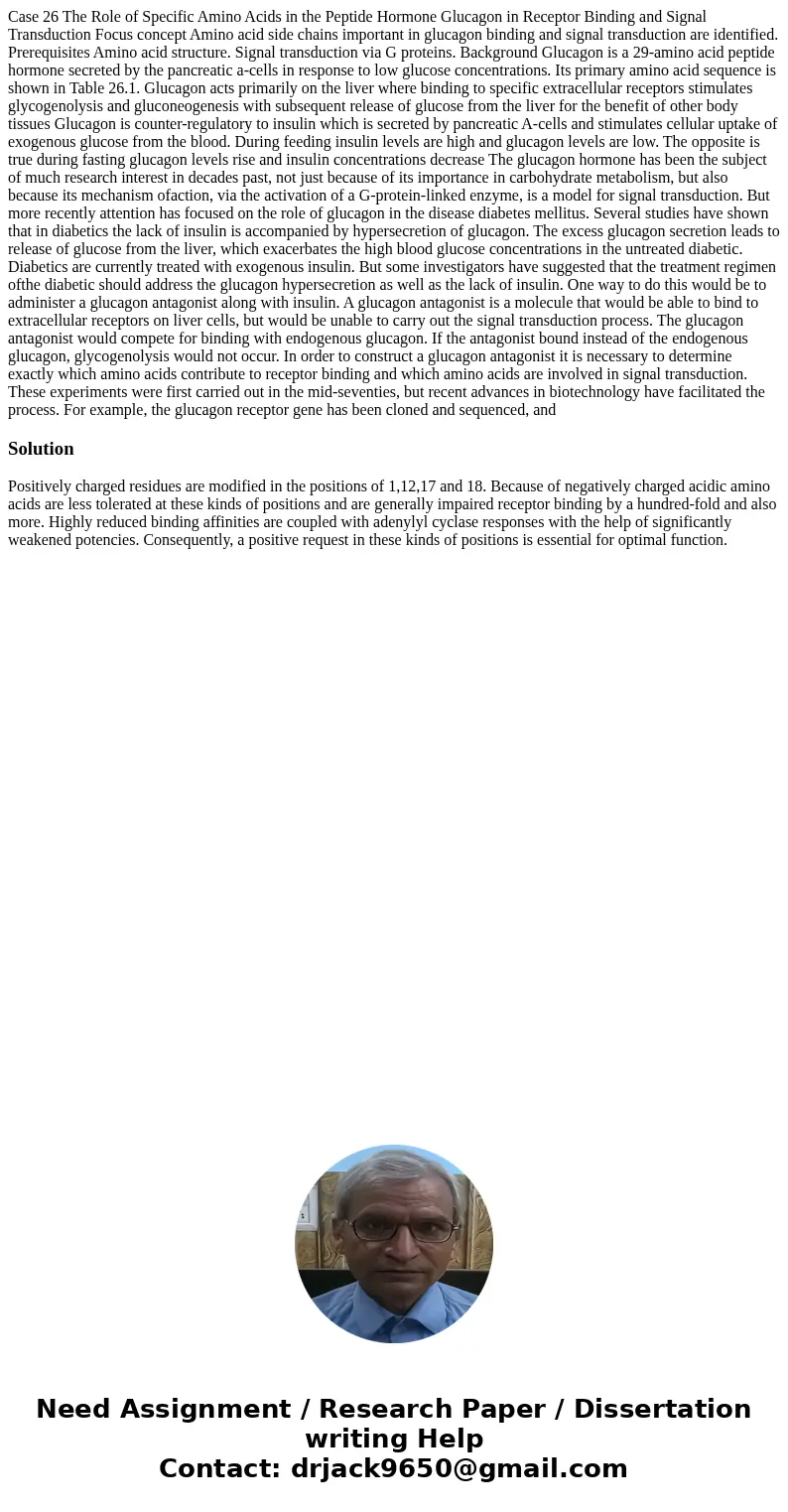Case 26 The Role of Specific Amino Acids in the Peptide Horm
Case 26 The Role of Specific Amino Acids in the Peptide Hormone Glucagon in Receptor Binding and Signal Transduction Focus concept Amino acid side chains important in glucagon binding and signal transduction are identified. Prerequisites Amino acid structure. Signal transduction via G proteins. Background Glucagon is a 29-amino acid peptide hormone secreted by the pancreatic a-cells in response to low glucose concentrations. Its primary amino acid sequence is shown in Table 26.1. Glucagon acts primarily on the liver where binding to specific extracellular receptors stimulates glycogenolysis and gluconeogenesis with subsequent release of glucose from the liver for the benefit of other body tissues Glucagon is counter-regulatory to insulin which is secreted by pancreatic A-cells and stimulates cellular uptake of exogenous glucose from the blood. During feeding insulin levels are high and glucagon levels are low. The opposite is true during fasting glucagon levels rise and insulin concentrations decrease The glucagon hormone has been the subject of much research interest in decades past, not just because of its importance in carbohydrate metabolism, but also because its mechanism ofaction, via the activation of a G-protein-linked enzyme, is a model for signal transduction. But more recently attention has focused on the role of glucagon in the disease diabetes mellitus. Several studies have shown that in diabetics the lack of insulin is accompanied by hypersecretion of glucagon. The excess glucagon secretion leads to release of glucose from the liver, which exacerbates the high blood glucose concentrations in the untreated diabetic. Diabetics are currently treated with exogenous insulin. But some investigators have suggested that the treatment regimen ofthe diabetic should address the glucagon hypersecretion as well as the lack of insulin. One way to do this would be to administer a glucagon antagonist along with insulin. A glucagon antagonist is a molecule that would be able to bind to extracellular receptors on liver cells, but would be unable to carry out the signal transduction process. The glucagon antagonist would compete for binding with endogenous glucagon. If the antagonist bound instead of the endogenous glucagon, glycogenolysis would not occur. In order to construct a glucagon antagonist it is necessary to determine exactly which amino acids contribute to receptor binding and which amino acids are involved in signal transduction. These experiments were first carried out in the mid-seventies, but recent advances in biotechnology have facilitated the process. For example, the glucagon receptor gene has been cloned and sequenced, and 
Solution
Positively charged residues are modified in the positions of 1,12,17 and 18. Because of negatively charged acidic amino acids are less tolerated at these kinds of positions and are generally impaired receptor binding by a hundred-fold and also more. Highly reduced binding affinities are coupled with adenylyl cyclase responses with the help of significantly weakened potencies. Consequently, a positive request in these kinds of positions is essential for optimal function.

 Homework Sourse
Homework Sourse